Assessing Nutritional Needs in Senior Hybrid Healthcare Plans

Understanding the Critical Role of Nutrition in Senior Healthcare
As populations age worldwide, integrating comprehensive nutritional assessment into senior healthcare, including hybrid care models, becomes vital. Proper evaluation facilitates personalized interventions, improves health outcomes, and supports successful aging. This article explores methods, best practices, and future directions for assessing nutritional needs in older adults within diverse healthcare frameworks.
Key Methods and Tools for Nutritional Assessment in Seniors
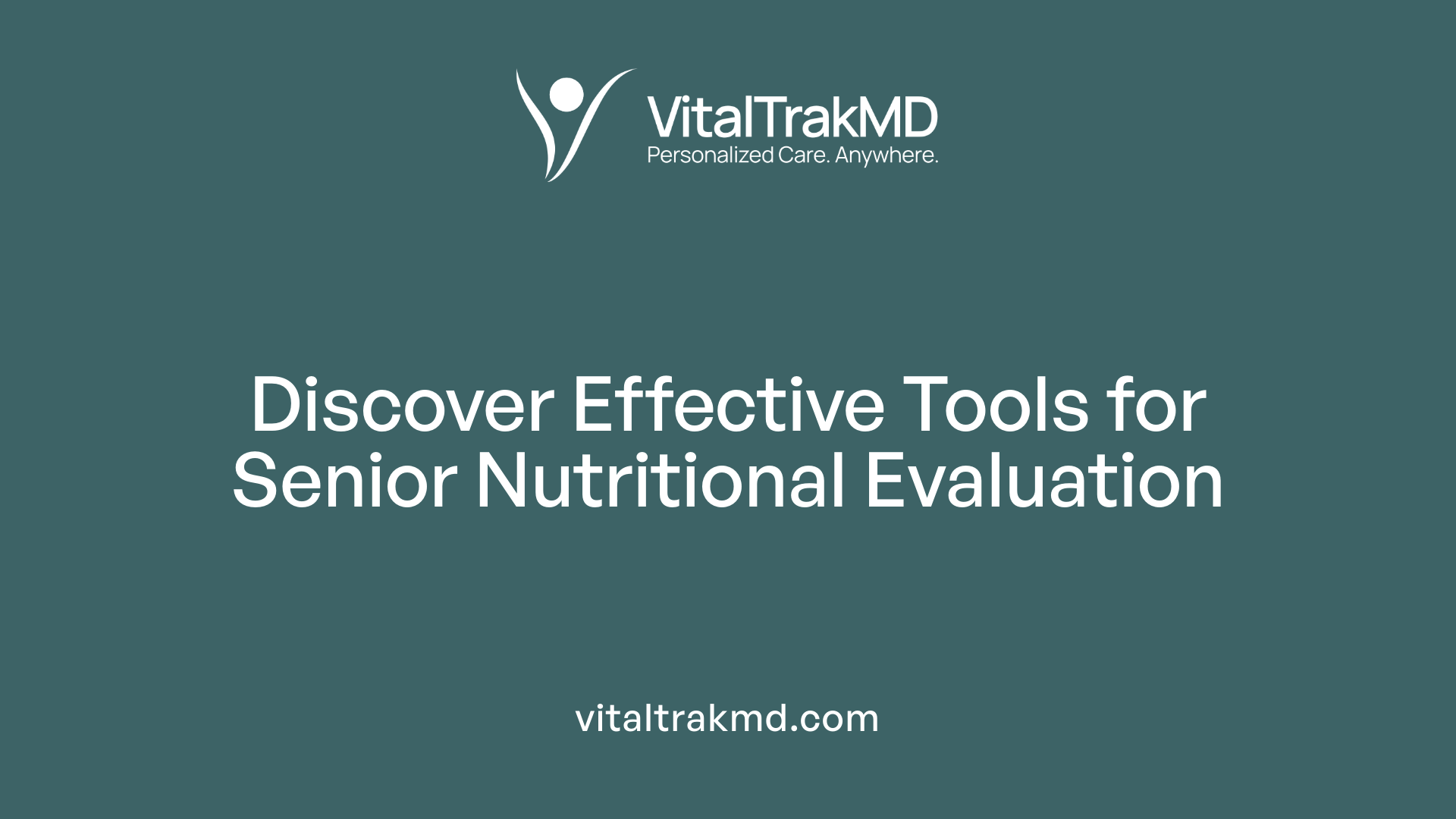
What are the key methods and tools for assessing the nutritional needs of seniors in healthcare plans?
Assessing the nutritional needs of older adults involves a variety of practical and reliable methods that provide a comprehensive overview of their health status. Anthropometric measurements, such as Body Mass Index (BMI) and calf circumference, are fundamental. BMI helps evaluate weight status relative to height, while calf circumference can be especially useful when height and weight are difficult to measure, serving as an indicator of muscle mass and nutritional reserves.
Biochemical tests are another crucial component, providing insights into nutritional deficiencies or imbalances, including levels of vitamin B12, vitamin D, calcium, and iron. Dietary assessments, such as food intake records, questionnaires, and interviews, help determine actual consumption patterns and identify areas needing improvement.
Validated screening tools like the Mini-Nutritional Assessment (MNA®) and its abbreviated version, the MNA®-SF, are widely employed in clinical settings. The MNA®-SF includes six questions focusing on food intake, recent weight loss, mobility status, psychological or acute illness, cognitive decline, and calculated body mass index, making it quick, non-invasive, and cost-effective.
The MNA®-SF scores categorize older adults into normal nutritional status, at risk of malnutrition, or malnourished, with cutoffs of 12-14, 8-11, and 0-7, respectively. These tools have demonstrated high reliability, with around 89% sensitivity and 82% specificity, ensuring they can be used confidently for routine screening.
Additional assessments include dietary intake questionnaires and food security surveys that identify social and economic factors affecting nutrition. Regular, comprehensive evaluations by registered dietitians are essential for tailoring interventions, adjusting meal plans, and tracking progress.
In combined, these methods and tools facilitate a detailed understanding of each senior’s nutritional status and help in designing effective, individualized care plans that improve overall health and well-being.
Integrating Nutrition Evaluation into Senior Healthcare Frameworks
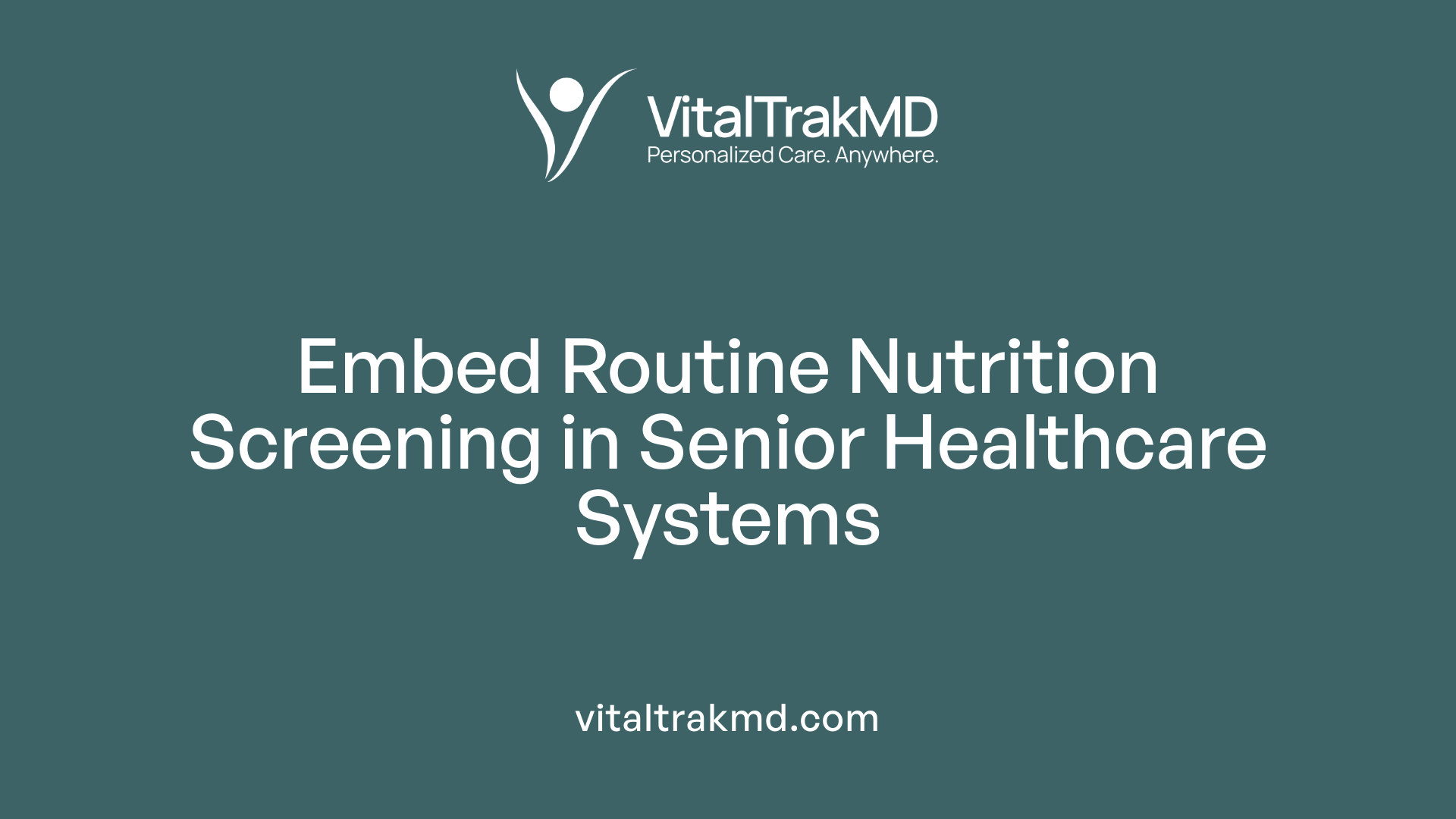 Routine use of assessments like MNA in primary care and community settings
Routine use of assessments like MNA in primary care and community settings
Implementing regular nutritional assessments is crucial for early detection of malnutrition among seniors. The Mini Nutritional Assessment Short-Form (MNA®-SF) is widely validated and easy to administer, taking around five minutes. Healthcare providers, including primary care physicians, community health workers, and facility staff, should incorporate this screening tool into routine visits for adults over 65. Regular screening helps identify those at risk early, enabling timely intervention to prevent complications like muscle loss, weakened immunity, and cognitive decline.
Supporting health systems with trained workforce and health information systems
Effective integration relies on well-trained health professionals—such as registered dietitian nutritionists—who can interpret assessment results and develop personalized nutrition strategies. Strengthening health information infrastructure ensures that nutritional data is accurately collected, securely stored, and accessible for ongoing monitoring. Electronic health records can flag at-risk individuals, support decision-making, and facilitate coordination among multidisciplinary teams. Investment in workforce training and robust information systems is essential to maintain high-quality nutritional care.
Addressing systemic barriers such as supply chain issues and data management
Challenges like food shortages, limited access to nutrient-rich foods, and poor data management can hinder nutritional interventions. Ensuring consistent availability of high-quality, tailored foods requires supply chain improvements and partnerships with food providers. Simultaneously, standardized data collection and electronic tracking are vital for monitoring trends, evaluating program outcomes, and adjusting care plans promptly. Overcoming these systemic barriers guarantees that seniors receive necessary nutritional support without interruption.
Formation of policies and multisectoral collaborations for continuous nutrition monitoring
Policy frameworks should prioritize nutrition in aging care, promoting multisectoral collaborations among health, social services, agriculture, and community organizations. Policies that mandate routine screening and allocate resources for nutrition programs foster sustainable practices. Cross-sector partnerships can develop community-based interventions, meal programs, and educational initiatives that reinforce healthy eating habits. These collaborative efforts ensure that nutrition assessment is embedded within a comprehensive aging care strategy.
Importance of early intervention and regular screening to detect malnutrition
Early identification of nutritional risks through regular screening enables interventions before health deterioration occurs. Regularly scheduled assessments, such as quarterly in institutional settings and annual in community-based care, help track changes in nutritional status. Prioritizing early intervention not only improves health outcomes but also reduces healthcare costs associated with advanced malnutrition and related complications. Implementing a proactive, systematic approach to nutrition screening is fundamental in optimizing health and independence among older adults.
| Aspect | Approach | Benefits | Additional Notes |
|---|---|---|---|
| Assessment Tools | Use standardized tools like MNA®-SF | Accurate identification of malnutrition risk | Quick, validated, and suitable for various settings |
| Workforce Support | Train healthcare providers and staff in nutrition assessment and intervention | Consistency in care and personalized nutrition plans | Ongoing education crucial for effective implementation |
| Data and Technology | Develop integrated health info systems for monitoring and tracking nutritional data | Enables proactive care and policy adjustments | Must be secure, user-friendly, and interoperable |
| Policy and Collaboration | Create policies that embed nutrition screening and foster partnerships | Ensures sustainability and comprehensive coverage | Multisectoral collaborations optimize resource utilization |
| Early Screening & Intervention | Schedule routine assessments and timely care adjustments | Prevents escalation of malnutrition and health decline | Critical for maintaining seniors’ independence and quality of life |
Personalized Meal Planning and Intervention Strategies Based on Assessment Outcomes
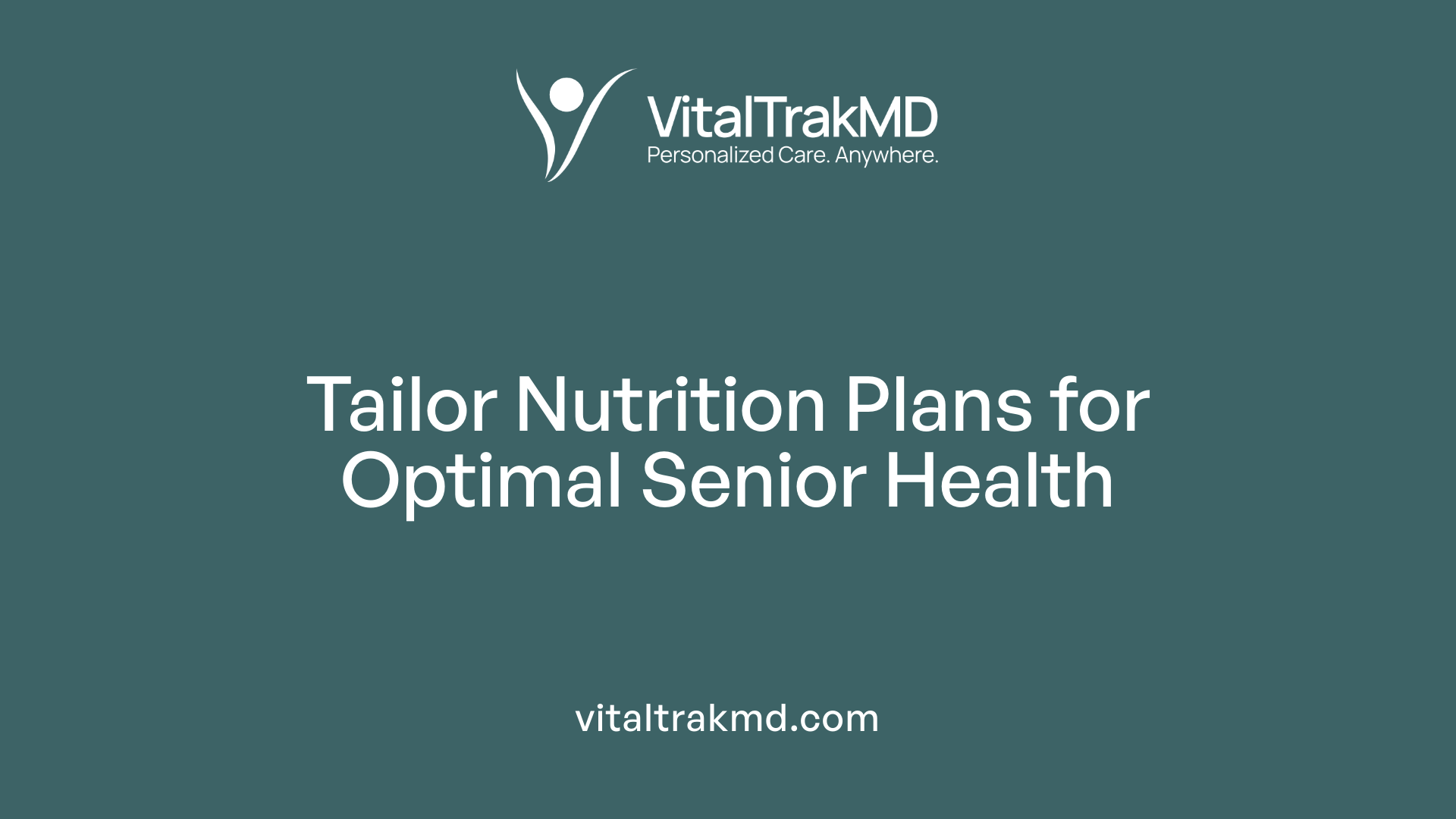
How are meal plans and nutritional interventions tailored based on assessment outcomes in seniors?
Effective nutritional planning for older adults relies on thorough assessments that account for medical history, health conditions, and dietary habits. Registered dietitians analyze these results to create individualized meal plans tailored to each senior's unique needs.
These plans often involve modifications like nutrient-rich foods that target deficiencies in vitamins and minerals such as calcium, vitamin D, and vitamin B12. They also incorporate strategies to manage chronic issues such as diabetes, hypertension, or digestive problems.
Advanced diagnostic tools, including genetic testing and laboratory analyses, help pinpoint specific nutritional requirements. This enables more exact interventions, like personalized supplementation or tailored dietary adjustments.
Regular monitoring through reassessment ensures that plans remain aligned with changing health statuses. This involves communication with healthcare providers, family, and the seniors themselves to evaluate progress in weight, energy levels, and overall well-being.
Modern technology facilitates this process further. AI-driven tools and software programs are now used to design flexible meal options that respect personal preferences, cultural backgrounds, and taste considerations. These digital systems enable dynamic plan adjustments, promoting adherence and optimal health outcomes.
Personalization also considers the senior’s food preferences and cultural eating habits, which enhances meal acceptance and social engagement during meals. By integrating assessment findings with technological innovations and personalized care, nutrition interventions become more effective, supporting seniors’ health and quality of life.
Supporting Wellness and Chronic Disease Management through Nutrition Evaluation
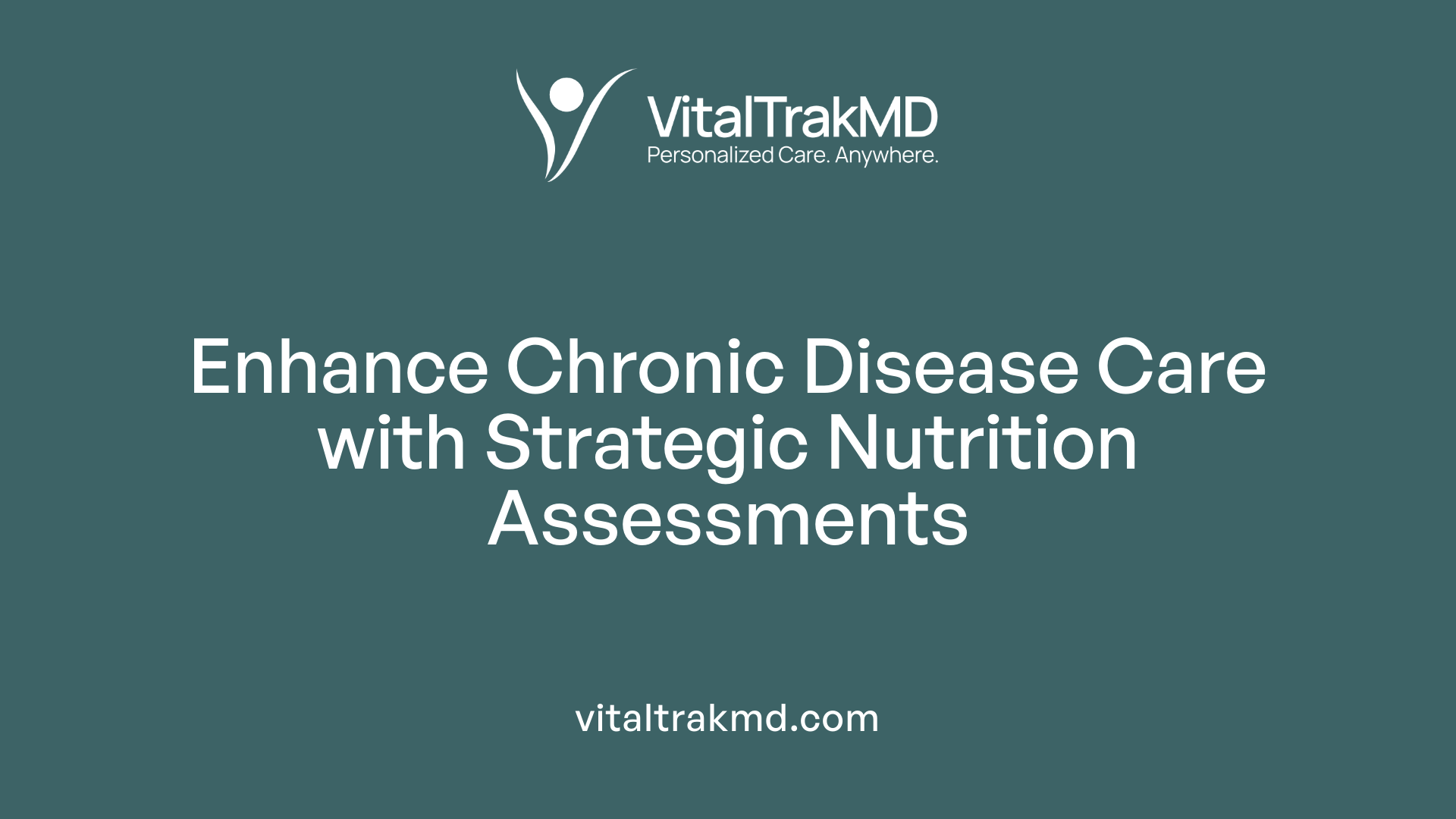
How does nutritional evaluation support wellness and the management of chronic conditions in older adults?
Nutritional evaluation plays a vital role in maintaining health and managing chronic illnesses in older adults. By thoroughly assessing each individual's medical history, dietary preferences, and health conditions, healthcare providers can identify deficiencies and risks that may affect their overall well-being.
One of the primary tools used is the Mini-Nutritional Assessment Short-Form (MNA®-SF), which quickly screens for malnutrition and risk factors like unintended weight loss and mobility issues. When combined with other indicators such as calf circumference—especially when height and weight measurements are difficult to obtain—it provides a comprehensive view of nutritional status.
Detecting issues like malnutrition, sarcopenia (muscle loss), micronutrient deficiencies such as vitamin D, calcium, and vitamin B12 allows for targeted interventions. These may include adjusting dietary plans to increase protein for muscle preservation, fortify foods to address deficiencies, or modify textures to aid swallowing.
Personalized dietary plans are developed based on these assessments, focusing on sufficient intake of key nutrients like fiber, vitamins, minerals, omega-3 fatty acids, and calcium. Such dietary adjustments support immune health, cognitive function, and energy levels.
Furthermore, ongoing monitoring—using scheduled reassessments and communication with family and healthcare teams—ensures nutritional plans adapt to changing health needs. This proactive approach helps prevent the progression of chronic conditions such as diabetes, hypertension, and heart disease.
Incorporating nutrition strategies into broader disease management programs enhances clinical outcomes. For example, controlling blood sugar through appropriate carbohydrate choices or managing blood pressure with reduced sodium intake directly impacts disease control.
In essence, nutritional evaluation and personalized, evidence-based dietary guidance form the backbone of effective long-term health support, contributing significantly to healthier aging and reduced healthcare costs.
This comprehensive approach underscores the importance of regular nutritional assessments and targeted interventions in promoting wellness and managing chronic diseases in older adults.
Future Trends and Challenges in Senior Nutrition Assessment
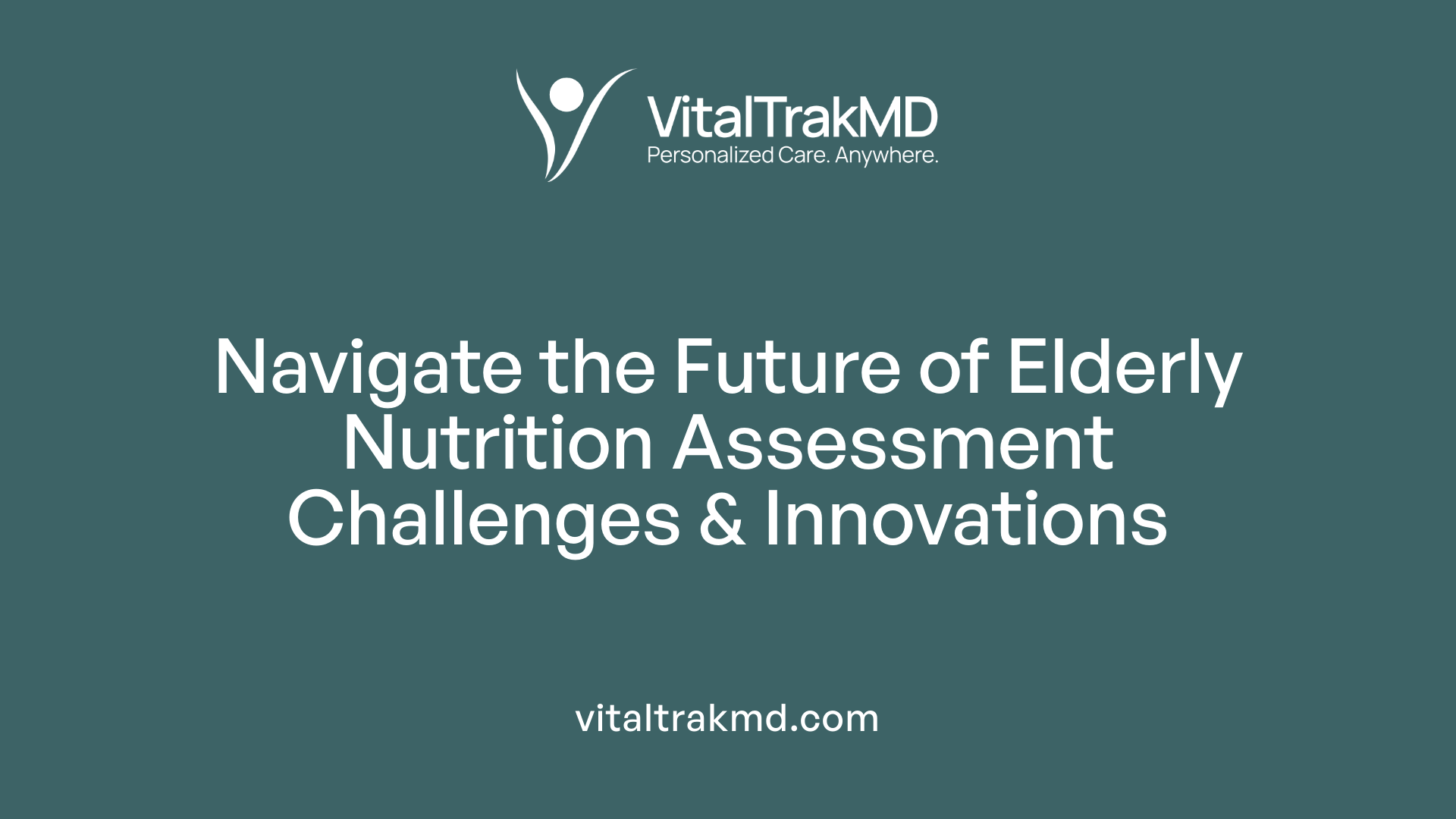
What challenges exist in assessing nutrition in seniors and what are the future directions?
Assessing nutritional status in older adults presents unique difficulties due to factors like multiple chronic conditions, cognitive impairments, and physical frailty. Traditional assessment tools, such as physical measurements (BMI, weight, calf circumference) and questionnaires, can be unreliable or difficult to implement with this population. While biochemical markers and advanced medical devices like bioelectrical impedance analysis (BIA) and dual-energy X-ray absorptiometry (DXA) provide valuable data, they may not always be feasible in every care setting.
Emerging digital health technologies hold promise for overcoming these challenges. Innovations such as food photography, wearable sensors, and passive image capture enable real-time, objective tracking of dietary intake and physical activity. These technologies can provide more accurate assessments and monitor changes over time without extensive manual input. However, they face hurdles including technical complexity, privacy concerns, and acceptance by older adults.
Future advances are expected to focus on personalized nutrition tailored to individual genetic profiles (genomics), metabolic patterns (metabolomics), and sensor data. Cloud-based platforms will play a pivotal role in integrating this information, allowing healthcare professionals to customize interventions and improve ongoing monitoring accuracy.
To realize these innovations, multidisciplinary approaches involving clinicians, technologists, dietitians, and researchers are essential. Training programs for staff and adherence to standardized guidelines such as the Global Leadership Initiative on Malnutrition (GLIM) criteria will help ensure reliable assessments. Continued research is fundamental to validating new technologies, addressing ethical considerations, and facilitating their integration into routine senior care.
Overall, the future of nutritional assessment in elderly care aims to be more precise, individualized, and technologically driven, ultimately improving health outcomes and quality of life for older adults.
Enhancing Elderly Healthcare with Precise Nutritional Strategies
Effective assessment and personalized intervention are cornerstones of optimizing health outcomes and quality of life in seniors. By adopting validated tools, integrating assessments into healthcare systems, and embracing technological innovations, healthcare providers can better address the complex nutritional needs of aging populations. Future advancements promise even more tailored, accurate, and accessible nutritional support, ensuring that older adults maintain independence, vitality, and well-being in their later years.
References
- Nutrition and Meal Planning for Seniors Receiving Home Care
- Assessing Nutrition in Older Adults | HIGN
- Promoting Healthy Aging: The Role of Nutrition in Long-Term Care
- [PDF] DETERMINE Your Nutritional Health
- Nutrition Information for Older Adults - MyPlate.gov
- Enhancing Nutrition and Wellness for Seniors: The Importance of ...
- Home and Community-Based Services for Seniors in Home-Based ...
- Understanding Long-Term Care Insurance - AARP
Recent articles
Want to Feel Better and Live Healthier?
Join hundreds of patients taking control of their health with personalized care that fits their life – not the other way around.
Rated 4.8/5 by 32+ customers







